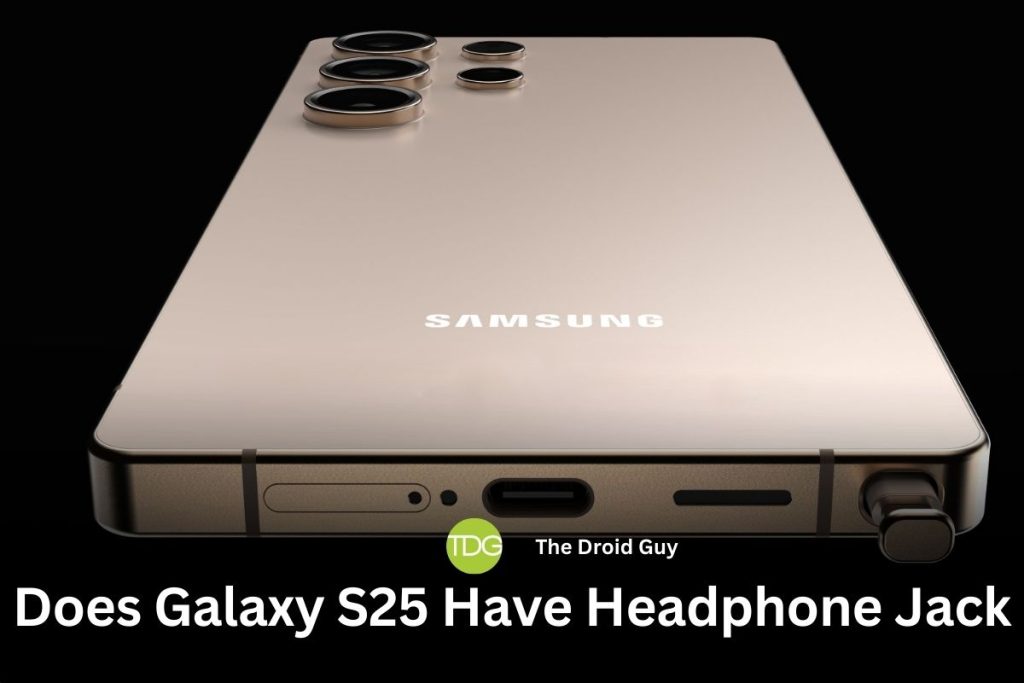Does the Samsung Galaxy S25 Have a Headphone Jack?
Answer: No, the Galaxy S25 series, including the flagship S25 Ultra, does not include a 3.5mm headphone jack. This follows Samsung’s trend of omitting the port from its premium devices since 2020, starting with the Galaxy Note 10 and continuing through the S20, S21, S22, S23, and S24 series .

The Disappearance of the Headphone Jack in Flagships
Samsung is not alone in this shift. Most flagship smartphones, including Apple’s iPhone 16 series, Google’s Pixel 9 Pro, and Sony’s Xperia 1 VI, have also abandoned the headphone jack. Here’s why:
- Wireless Audio Dominance: The rise of Bluetooth technology (e.g., Bluetooth 5.3 in the S25 Ultra) and advancements in wireless earbuds like Samsung’s Galaxy Buds line have made wired headphones less critical for mainstream users .
- Design and Durability: Removing the jack allows for slimmer, water-resistant designs. The S25 Ultra, for example, uses the freed-up space for a larger battery, improved cooling, and advanced camera hardware .
- Ecosystem Lock-In: Companies like Samsung and Apple promote their wireless audio products (e.g., Galaxy Buds, AirPods) to create a seamless ecosystem, driving accessory sales .
- Cost Reduction: Eliminating the jack and associated components reduces manufacturing costs, which can be redirected toward other features .
Best Current Phone with a Headphone Jack (Released in the Past 12 Months)
| Product | Brand | Name | Price |
|---|---|---|---|
 | ASUS | ASUS ROG Phone 8 Pro | Check Price on Amazon |
 | Samsung | Ssamsung Galaxy A15 5G | Check Price on Amazon |
 | Sony | Sony Xperia 1 V | Check Price on Amazon |
* If you buy through links on our site, we may earn an affiliate commission. For more details, please visit our Privacy policy page.
For users prioritizing wired audio, here are the top options released between January 2024 and January 2025:
- Key Features: 6.78-inch AMOLED display, Snapdragon 8 Gen 3 processor, 165Hz refresh rate, and dual front-facing speakers.
- Why It Stands Out: Designed for gamers, it includes a headphone jack for lag-free audio and supports high-impedance headphones .
- Key Features: 6.1-inch OLED display, 120Hz refresh rate, and a 48MP camera.
- Why It Stands Out: Retains the jack while offering flagship-tier specs and audiophile-grade LDAC support .
- Key Features: Budget-friendly, 6.5-inch Super AMOLED display, and 5,000mAh battery.
- Why It Stands Out: One of the few Samsung phones still offering a 3.5mm port in 2026 .
Best Alternatives: Wireless Audio for the Galaxy S25
| Product | Brand | Name | Price |
|---|---|---|---|
 | Samsung | SAMSUNG Galaxy Buds 3 Pro | Check Price on Amazon |
 | Sony | Sony WH-1000XM5 | Check Price on Amazon |
 | Samsung | SAMSUNG AKG N700NC M2 | Check Price on Amazon |
 | Cambridge Audio | Cambridge Audio Melomania P100 | Check Price on Amazon |
 | Samsung | Samsung Galaxy Buds FE | Check Price on Amazon |
* If you buy through links on our site, we may earn an affiliate commission. For more details, please visit our Privacy policy page.
If you’re transitioning to wireless, here are top Bluetooth options compatible with the S25 series:
Samsung Galaxy Buds 3 Pro
- Features: Hi-Res Audio support, adaptive ANC, and seamless integration with Samsung devices. Ideal for Galaxy users .
Sony WH-1000XM5
- Features: Industry-leading noise cancellation, 30-hour battery life, and LDAC support for high-resolution audio .
Apple AirPods Pro (2nd Gen)
- Features: Spatial audio, H2 chip for low latency, and excellent ANC. Works well with Android via AAC codec [general knowledge].
For wired headphone loyalists, USB-C adapters like the Samsung AKG USB-C to 3.5mm dongle offer a reliable workaround .
Why the Headphone Jack Isn’t Coming Back
While niche brands like Asus and gaming-focused phones retain the jack, Samsung and Apple have doubled down on wireless futures. The S25 Ultra’s focus on AI, Qi2 wireless charging, and premium audio via Bluetooth underscores this direction .
For now, users must choose between flagship innovation or wired convenience, a trade-off that reflects the industry’s broader shift toward a wireless, port-minimalist future.